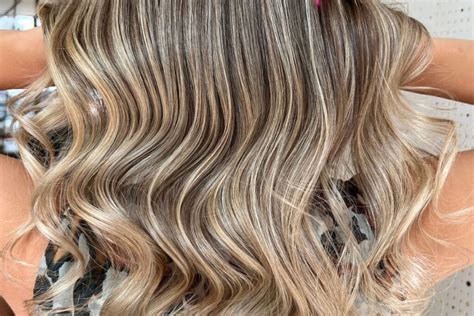Overview
Balayage is a hair-coloring technique that creates a natural, sun-kissed look. It involves painting color onto the hair freehand, creating subtle highlights and lowlights that blend seamlessly with your natural color. Balayage is available in both partial and full applications, each with its unique benefits and drawbacks.

Partial Balayage
What is it?
Partial balayage involves coloring only certain sections of the hair, typically the ends or mid-lengths. This creates a more subtle, low-maintenance look that is ideal for those who want to enhance their natural hair color without a drastic change.
Benefits:
* Less time and money than a full balayage
* More natural-looking than a full balayage
* Less damaging to the hair
* Can be combined with other hair-coloring techniques, such as root smudging or ombré
Drawbacks:
* Not as dramatic as a full balayage
* May require more frequent touch-ups
* Can be more difficult to achieve a specific color result
Full Balayage
What is it?
Full balayage involves coloring the entire head of hair. This creates a more noticeable, high-impact look that is ideal for those who want a dramatic change or to create a specific hair color.
Benefits:
* More dramatic and noticeable than a partial balayage
* Greater control over the final color result
* Can be used to create a variety of hair looks, from subtle to bold
* Less frequent touch-ups required
Drawbacks:
* More time and money than a partial balayage
* More damaging to the hair
* Can be more difficult to maintain
Which One is Right for You?
The best way to decide between partial and full balayage is to consult with a professional hairstylist. They can assess your hair, lifestyle, and desired look to help you choose the right option.
Here are some general guidelines to consider:
- Partial balayage: Ideal for subtle enhancement, low maintenance, or combination with other hair-coloring techniques.
- Full balayage: Ideal for dramatic change, high impact, or achieving a specific hair color.
Cost Comparison
The cost of balayage varies depending on factors such as the length and thickness of your hair, the experience level of your hairstylist, and the geographical location of the salon.
According to a 2022 survey by the American Hairdressing Association, the average cost of a partial balayage is between $100-$250, while a full balayage typically ranges from $250-$500.
Duration
The time it takes to complete a balayage treatment also varies depending on the length and thickness of your hair.
Partial balayage: Generally takes 2-4 hours.
Full balayage: Can take up to 6 hours or more.
Tips for Choosing the Right Balayage
- Consider your natural hair color and skin tone.
- Bring inspiration photos to your consultation.
- Be realistic about the level of maintenance your willing to commit to.
- Communicate clearly with your hairstylist about your desired look.
- Don’t be afraid to ask questions and get clarification.
Tricks for Freshening Up Your Balayage
- Use a color-safe shampoo and conditioner.
- Get regular trims to remove split ends.
- Use a leave-in conditioner or hair mask to hydrate and protect your hair.
- Touch up your roots as needed, usually every 6-8 weeks.
Common Mistakes to Avoid
- Over-processing: Can damage your hair and lead to breakage.
- Harsh chemicals: Can strip your hair of its natural oils, causing it to become dry and brittle.
- DIY balayage: Can be difficult to achieve a professional-looking result.
- Using the wrong color: Can result in an unnatural or unflattering look.
- Going too light or too dark: Can create a drastic and unflattering contrast with your natural color.
How to: Balayage Step-by-Step
Materials:
* Balayage brush or comb
* Color developer
* Balayage clay or lightener
* Color protecting spray
* Mixing bowl
* Gloves
Steps:
- Prepare the hair: Wash and dry your hair thoroughly.
- Section the hair: Divide your hair into sections using a comb or brush.
- Apply the color: Use a balayage brush or comb to apply the color developer to the desired sections of your hair.
- Add the lightener: Apply the balayage clay or lightener to the hair a few centimeters from the roots.
- Wrap or foil: Wrap or foil the treated hair to create heat, which will help the color develop.
- Process: Leave the color on for the recommended time, usually 30-45 minutes.
- Rinse and neutralize: Rinse the hair thoroughly with water and apply a color protecting spray to neutralize the color.
- Condition: Apply a deep conditioner or hair mask to hydrate and protect your hair.
Conclusion
Partial balayage and full balayage are two versatile hair-coloring techniques that can create a variety of stunning looks. By understanding the differences between the two, you can make an informed choice about which option is best for you.
